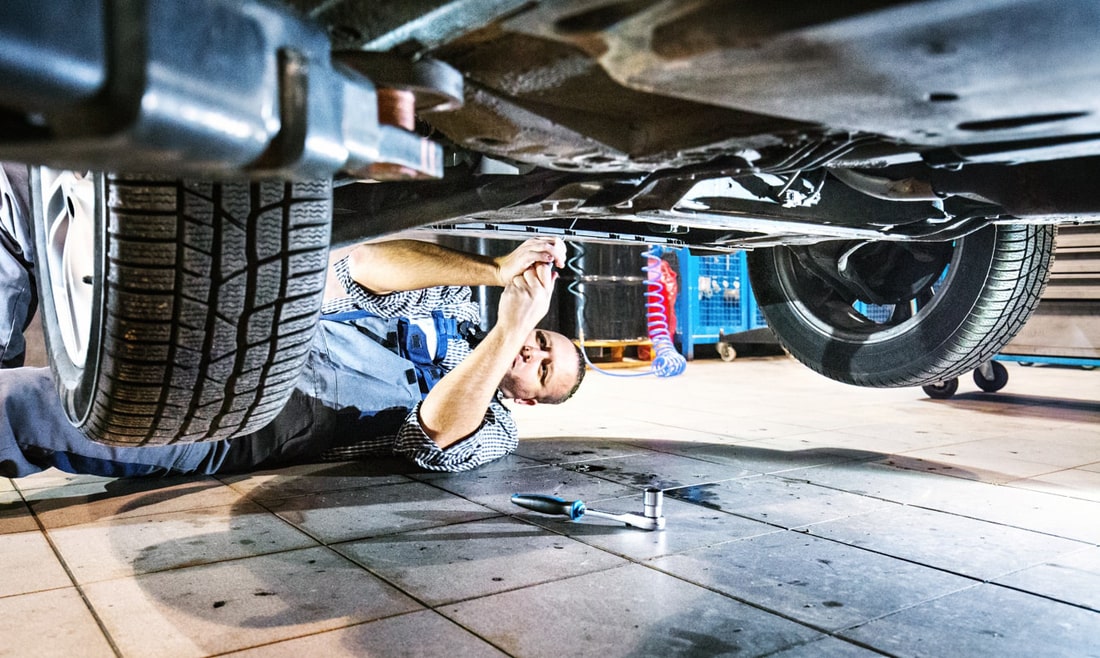Shopping for an extended warranty can be overwhelming, but it might help to narrow it down into the specific kinds that are available. In this blog post, we’re going to cover what a powertrain warranty is and how it can be applied to your vehicle.
A powertrain warranty can help cover expensive repairs to the engine or transmission. These components are typically among the priciest to repair, which is why many opt for a powertrain warranty. Having this coverage can help offset the financial impact of sudden repairs, and allow warranty holders to stay on the road without decimating their finances.
What is a Powertrain Warranty?
Most drivers are familiar with a manufacturer’s warranty, but some may not be entirely sure what a powertrain warranty covers. When you purchase a vehicle from a dealership, it typically comes with a warranty lasting several years from the original seller or manufacturer. These warranties cover several years or up to 60,000 miles. This is often the case for new or used cars.
A powertrain warranty is available in both factory and aftermarket warranty packages. Extended warranties help protect you against costly car repairs, especially if your factory warranty recently expired. A powertrain warranty covers specific components that power your vehicle such as the engine, transmission, driveshafts, suspension, and more.
What Does a Powertrain Warranty Cover?
Powertrain warranties are specifically intended for the engine and other components that power your vehicle and its wheels. Covered components include:
- Driveshaft—this component helps power the vehicle by delivering power from one area to another. Depending on if you have rear-wheel, front-wheel, or all-wheel drive, driveshaft components may be located in the front or rear of your vehicle. Rear-wheel vehicles have longer driveshafts, while some all-wheel drive vehicles have multiple driveshafts.
- Engine—your engine takes in gasoline, and converts that to power via internal combustion. Thus, if your engine can’t be started or it is damaged, your car won’t start. Sometimes this may be due to a specific engine problem, or a problem with other components like the starter motor.
- Transmission—your transmission takes power from your engine and transmits it to your wheels. This is how the wheels know how fast to spin. It does this via the crankshaft, which helps shift gears. The crankshaft and gear shift resemble the system you might see on a multi-speed bike, but on a larger scale.
- Transfer case—for vehicles with four-wheel drive, the transfer case helps transfer power to the back wheels from the front of the car. The case is where the driveshaft connects to the engine and then to the back wheels. Transfer cases contain fluid that needs to be changed on a regular basis in order to keep running smoothly.
- Internal engine components—there are multiple components inside the engine that help it keep your car running, including spark plugs, valves, cylinder, piston, and crankshaft. Powertrain warranties typically cover the engine and all its components. Specific covered components might include:
- Hoses
- Sensors
- Pistons
- Timing belt
- Gears
- Cylinder
- Crankshaft
- Spark plugs
- Oil pump
- Differential—this component allows your wheels to spin at different speeds, which is essential in making safe turns. The differential supplies equal amounts of torque to both wheels, which allows the wheels to react to resistance. When turning, the wheel meeting the most resistance will slow, allowing the car to make the turn at a safe speed. Some differentials are located inside the transmission and will be included in regular transmission service appointments. If not, ensure you change your oil regularly to avoid voiding your warranty.
If you’re unsure about any of these components and what might be covered under a powertrain warranty, a warranty sales representative can help you with a detailed coverage overview.
Comparing Powertrain Warranties vs. Drivetrain Warranties
The list of covered components hopefully gives you an idea of how the powertrain warranty would benefit you, but it might be helpful to understand how a powertrain warranty compares to other offerings, such as drivetrain coverage.
- Drivetrain coverage — many drivers are confused about the difference between drivetrain and powertrain coverage. There is some overlap in what each covers, but drivetrain coverage does not include the engine. Instead, this type of warranty covers the following components:
- Torque converter
- U-joint
- Propeller shaft
- Rear-axle
- Spool
- Differential
Warranties also differ depending on the provider, and in some cases your vehicle type, so be sure to get all the information before you sign.
Why Should I Get a Powertrain Warranty?
If you already have a manufacturer’s warranty, then we suggest checking when your plan will expire. If the expiration date is approaching quickly, then investing in an extended warranty can keep you protected on the road and feeling empowered. You may have insurance in place already, but it’s important to note that extended warranties and insurance coverage are NOT the same type of vehicle protection.
A powertrain extended warranty helps cover the following:
- Engine, transmission, or driveshaft repairs
- Faulty parts and manufacturing errors
- The cost of replacing parts or repairing them during the warranty period
Warranty coverage also comes with additional benefits such as 24/7 roadside assistance, rental car coverage, trip interruption coverage, and even maintenance.
By contrast, insurance covers more of those types of damages. Standard insurance coverage usually encompasses:
- Theft
- Damages from a car accident or other accident
- Damages resulting from natural or unexpected disasters like fires, tornadoes, hurricanes, storms, floods, etc
- Injury to yourself or others — if you or others are injured and you’re at fault, insurance can cover their medical costs, vehicle repair costs, and lost wages in some cases
- Motorists who aren’t insured — if another motorist is at fault for damages or injuries, their insurance is responsible for paying out claims. In cases where a motorist does not have insurance or is underinsured, your insurance will cover these costs
How Can I Choose a Warranty Provider?
There are many vehicle protection providers to choose from, and finding the right one for you can be hard to determine at first. Luckily, there are some steps you can take to narrow it down.
- Get recommendations—ask friends and family who have an active warranty in place about their experience with the provider. How was the claims process for them? Were they offered reimbursement opportunities? . Get the facts from them about how they use it, if it’s difficult, and what they like about it.
- Check reviews—visit online review sites and search online for posts and information about companies you’re considering. This may give you a good idea of common problems, and also insight into the company’s customer service.
- Ask a mechanic—your regular, trusted mechanic may work with independent warranty companies regularly. If you want to continue going to them, it may be beneficial to get their input so you select a company they do business with.
- Get a free quote—warranty companies offer free quotes on their website along with other warranty information. Knowing pricing and reimbursement options can help narrow down your decisions.





